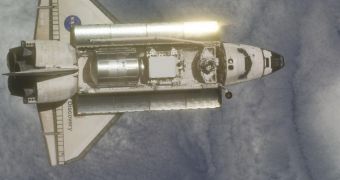With the launch of space shuttle Discovery on Thursday, February 24, the number of different spacecraft that are currently attached to the International Space Station (ISS) jumped to 4. There are now American, Russian, European and Japanese vehicles attached to the orbital facility.
This is the first time ever that such an impressive feature is achieved, and it stands as a testimony to the impressive feats of engineering that the space agencies involved in the ISS project are capable of.
While the United States and Russia are “old” players in this field, the European Space Agency (ESA) and the Japan Aerospace Exploration Agency (JAXA) are relatively new players.
The Johannes Kepler Automated Transfer Vehicle (ATV) is ESA's second, following a spacecraft it launched back in 2008. The Jules Verne was the first ATV to fly successfully to the space station.
Kounotori 2 is the second H-II Transfer Vehicle (HTV) JAXA designed and built for resupplying the ISS. The first one launched on September 10, 2009, aboard an H-IIB delivery system.
Both Kounotori 2 and Johannes Kepler are attached to the ISS right now. The former arrived at the station on February 26, while the European spacecraft docked to its designated port on February 24.
These two vehicles are unmanned resupply cargo ships, and they each carry several tons of supplies for the permanent, six-astronaut crew occupying the space lab. Included in their cargo are water, food, scientific experiments, space parts, and personal items for the crew members.
The Russian-built Progress 41 is also a resupply capsule, and it was launched on January 28. It arrived at the ISS on January 30, just three weeks ahead of the other three spacecraft. Around the same time, the Progress 40 vehicle was detached and deorbited, burning up above the Pacific.
The fourth spacecraft on the ISS is the American shuttle Discovery, which is currently conducting its final flight. It finally managed to launch on Thursday, after about four months of delays caused by a variety of technical issues.
It docked on the NASA Harmony module on Saturday, February 26, and lifted the total mass of the ISS to no less than 1.2 million pounds, or around 544,310 kilograms, Space reports.
In addition to the four space vehicles mentioned, the ISS also holds two additional Soyuz space capsules. These manned spacecraft are designated as “lifeboats” for the station's crew. Each of them can accommodate three astronauts.
“That that's about as many different visiting vehicles as you can imagine,” said before the Discovery docking process began STS-133 astronaut Alvin Drew.
At this point, the ISS features 6 spacecraft attached to it, and a temporary crew of 12 astronauts.

 14 DAY TRIAL //
14 DAY TRIAL //